The Way We Were: John Curington
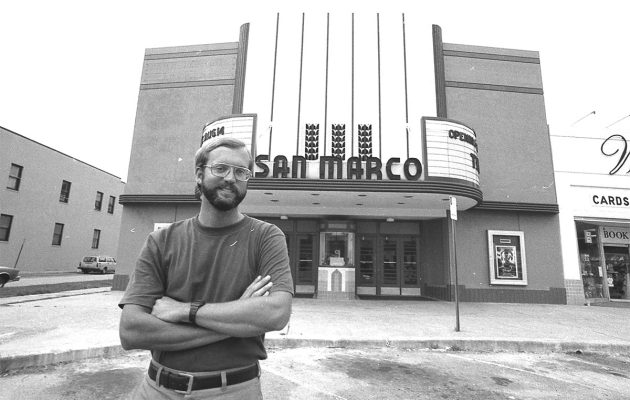
Former San Marco Re-developer Finds New Passions in Croquet, Founding of Ponte Vedra Croquet Club
John Curington is a tall, athletic Southern gentleman whose intellect and CEO energy make it easy to imagine the drive he applied to his goals – first in San Marco, then in Ponte Vedra. From 1973 to 1993, his quiet intensity centered on investing and re-developing San Marco real estate with his business partner Keith Kimball, saving an iconic boulevard district. Since then, he has focused on the Ponte Vedra Croquet Club, which he founded in 2015, a world-class venue for the sport and Jacksonville.
Chapter 1: The Savior of San Marco
Curington was born in Riverside in 1949 but grew up in Neptune Beach. He attended St. Paul’s Catholic School, then Bishop Kenny before graduating from the former Eckerd College with a business degree in 1971. He worked for Prudential Insurance Company’s real estate department for three years. Then, after a year with a Jacksonville builder, he obtained his real estate broker’s license.
Curington had moved to San Marco’s River Road in 1973 because he liked the neighborhood and its proximity to his job at Prudential. He laughs now, recalling that he was unemployed after going into real estate until he discovered the immense satisfaction and pure enjoyment of investing, renovating and developing property.
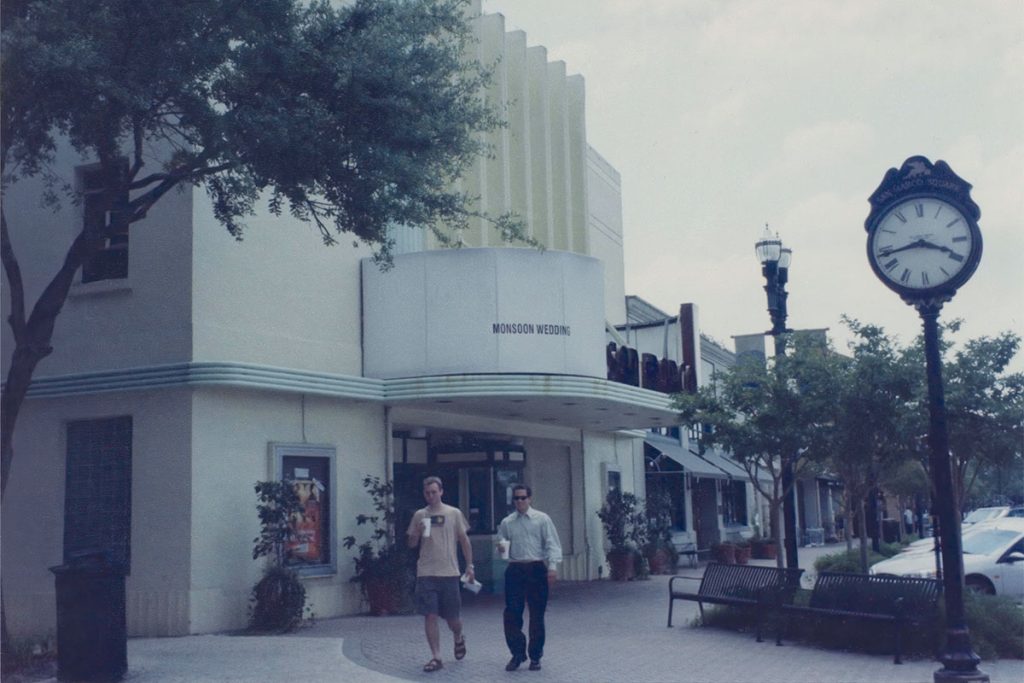
It sounds almost accidental how he became a property owner, multi-business owner and single-minded community advocate for the next 20 years in San Marco. In 1979, Curington and Kimball bought most of the San Marco Boulevard buildings, including the Theatre and centerpiece St. Marks Building (a.k.a. the San Marco). The two-story Mediterranean Revival structure, designed by famed architects Marsh & Saxelby, was the boulevard’s first commercial building. Its most famous tenant was the rowdy Town Pump Tavern (1933-1983).
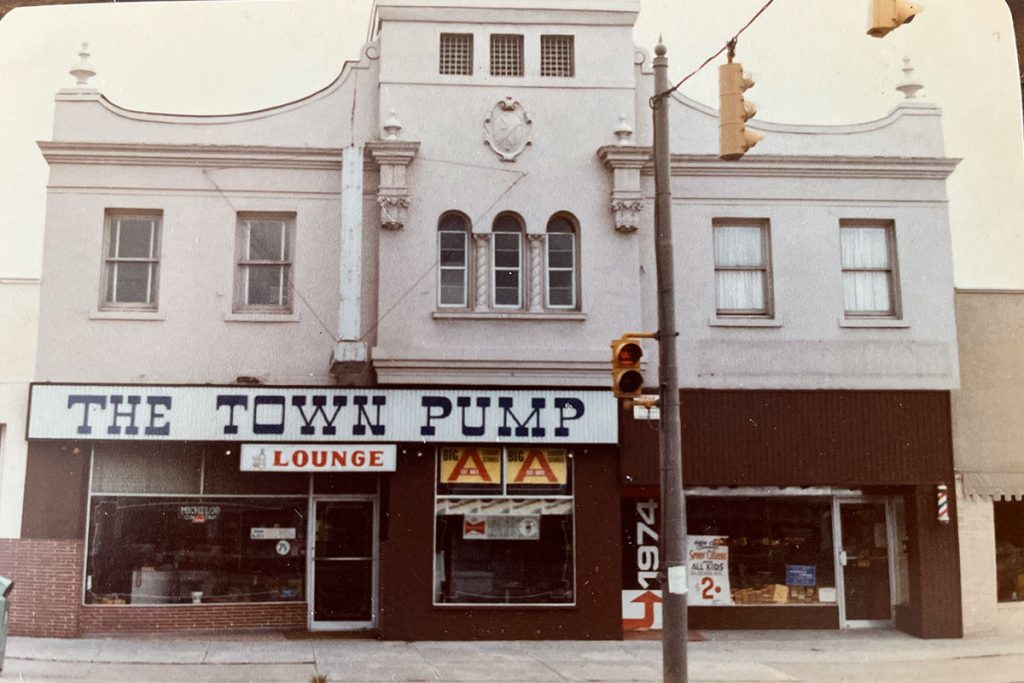
The San Marco Theatre they bought from attorney Eli Fink was derelict; duct tape held the carpets together. The 1938 Art Deco single-screen movie theatre designed by nationally known architect Roy Benjamin was a marvel when it opened in 1938. Still, by 1979, it was a financially risky dinosaur in an era of multi-screens. Its location and potential, however, were five-star.
After a costly, six-month total renovation, Curington and R. Ward Lariscy – another longtime resident, merchant and San Marco advocate – resurrected the theatre’s interior design. Other improvements included innovative amenities: at-seat tables, food, beer and wine. The transformation elevated the experience for movie-goers when the theatre re-opened on August 14, 1981.
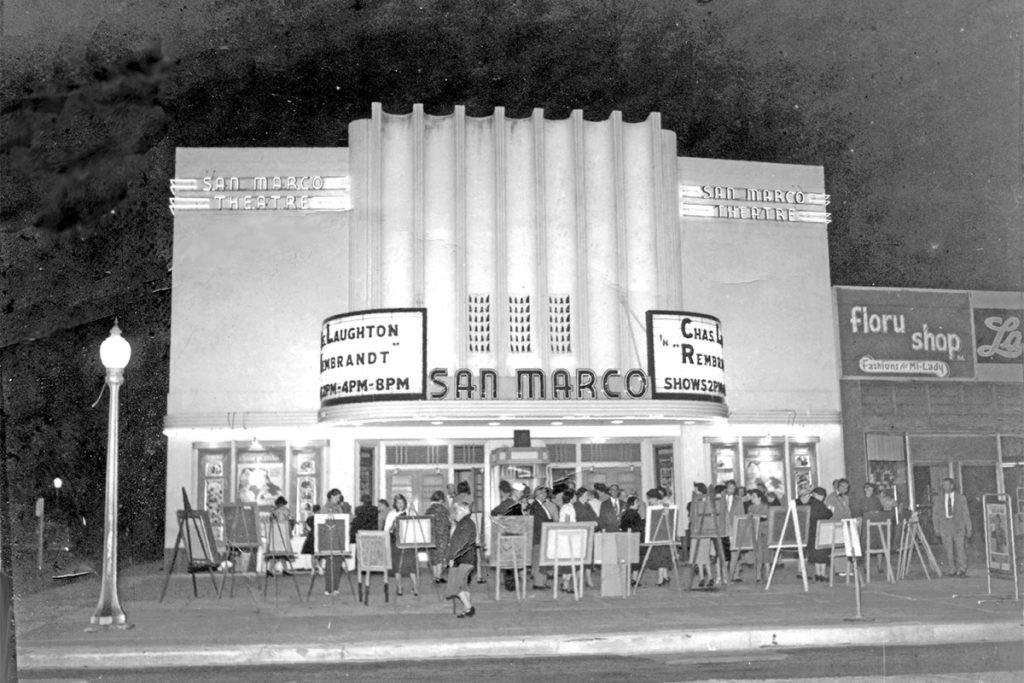
“The buildings we bought were badly run-down. The theatre was terrible. Besides no maintenance, the Rocky Horror Picture Show fans had destroyed everything and damaged the screen,” Curington said.
During the 1970s and early ‘80s, San Marco’s challenges made news beyond the boulevard. Its regional reputation suffered from news reports that sometimes focused on the problems. Many Jacksonville residents thought San Marco’s only shops were Pic N’ Save and Peterson’s Five & Dime discount stores.
“It was a worn-out strip center, not an inviting place where anyone wanted to go. Everywhere you looked, it appeared neglected,” Curington said.
Commercial rent in San Marco in the 1970s averaged $2 to $5 per square foot, lower than elsewhere, Curington said, but affordability was irrelevant. There were few reasons to visit the area. Shops struggled as the storefronts and surroundings declined. Urban sprawl contributed, offering shoppers more options at Regency Square Mall (1967) and Orange Park Mall (1975).
San Marco’s prime location at the juncture where Atlantic and San Marco Boulevards meet Hendricks Avenue, and the history and architectural importance of the area demanded better, Curington believed. He thought the boulevard’s atmosphere should match the beauty of its neighborhood. He was convinced that San Marco could rival any other upscale retail center given the right opportunity.
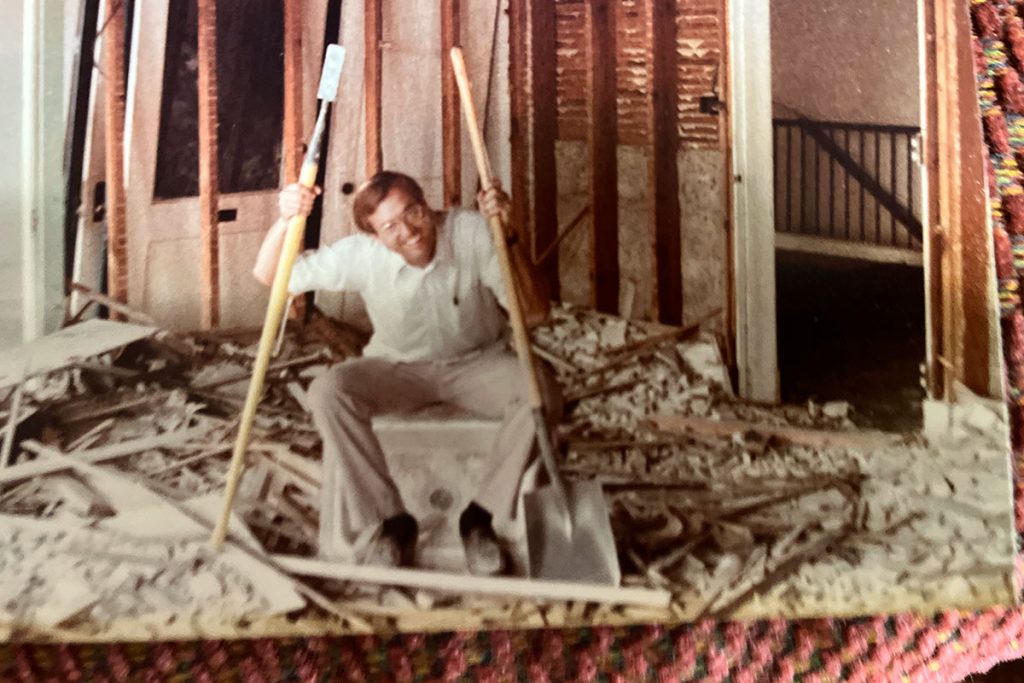
“I wanted to improve San Marco by renovating one building at a time, including sidewalks and landscaping. There was so much to do,” he said. “People wanted improvements; many merchants and residents helped.”
Curington began renovating the buildings, working side-by-side with tenants who received a lease discount for their labor. His businesses opened in the St. Mark’s building in 1984: Café on the Square downstairs and St. Mark’s Restaurant above.
There were hiccups along the way, but the forward momentum continued. They sold the theatre after a year, and St. Mark’s fine dining – despite earning rave reviews – proved unprofitable and closed. The Café, however, became San Marco’s robust local hotspot. Curington sold it to Wayne Davis in 1992.
New businesses leased Curington’s other freshly renovated spaces, including the flagship Peterbrooke Chocolatier. Founder Phyllis Lockwood Geiger was urged to open in Ponte Vedra and admits she knew nothing about San Marco.
“When I saw that quaint little village and John described its history, I loved everything about it. I bought my home nearby and opened my first shop in a 700-square-foot space, which I leased from him in September 1983. We were both there every day, renovating, covered in dust and dirt, working simultaneously. That’s John, totally hands-on, doing whatever needs to be done,” Geiger said. She also owned Café Carmon, another now-closed San Marco favorite.
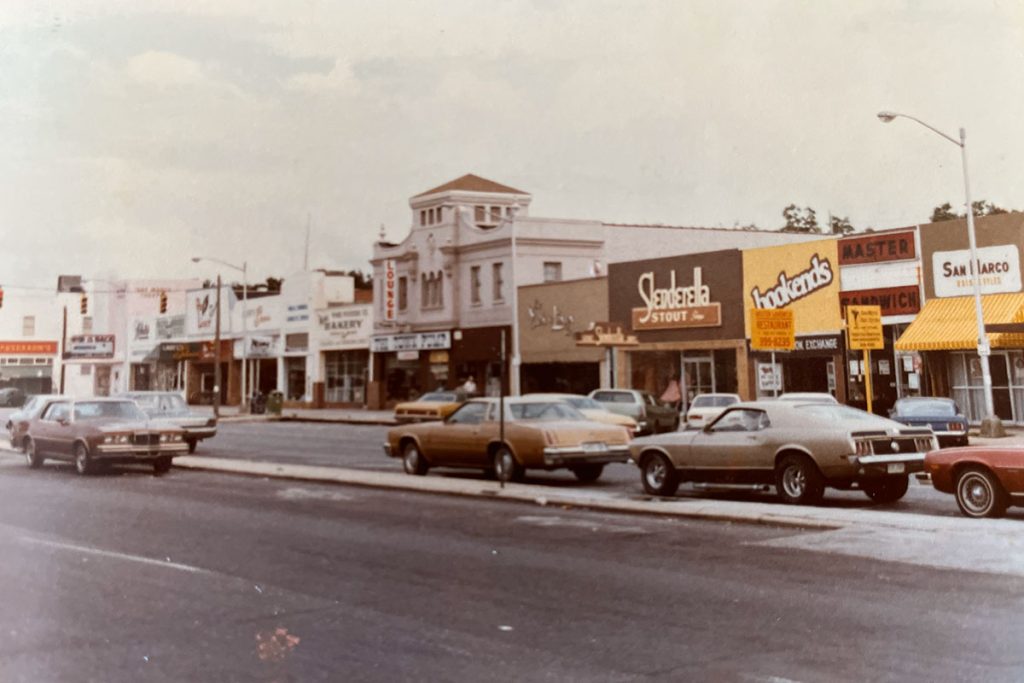
Curington nurtured and valued that small-town atmosphere. He wanted residents to feel comfortable walking from their homes up to the square for dinner or shopping, with ample opportunities to mingle. He knew that various unique boutiques, quality services and excellent restaurants, all within a well-defined, appealing area, would draw people to San Marco.
While Curington is deeply respected, remembered with thanks and credited for many things he did in San Marco, it was his legal action stopping a 1985 public works project that may be most important. Public reaction was swift when the city announced plans to excavate the San Marco Square area and streets for a reconstruction and drainage improvement project. It was expected to last up to 18 months and would overlap the entire holiday season.
Merchants and residents were blindsided and concerned about the logistics of such a plan in an already tightly spaced historic area if the main thoroughfares were blocked and traffic re-routed. A year and a half of noise from heavy construction equipment and mountains of dirt and concrete in a retail area would compound the misery. Equally damaging was the proposed elimination of 35% of parking spaces when parking was already at a premium. Merchants protested and threatened legal action to no avail.
Curington filed a legal injunction against the city that stopped the project and forced a complete re-evaluation. Merchants credit him for saving them from what could have been a catastrophic loss of business for months during a successful re-development renaissance. That construction project would have also ruined the crucial holiday retail sales season in San Marco, a time of highest annual sales revenue for many businesses.
Today’s thriving San Marco Square and environs owe much to those merchants and longtime residents who persevered during the challenging years. Curington commends the San Marco Preservation Society, San Marco Merchants Association members, Keith Kimball, the late Jim Rink, Lee Mercier, Zimmerman Boulos, and many other community and city supporters. Their dedication and critical improvements during the 1970s, ‘80s, and ‘90s paved the way and continue to champion San Marco.
Chapter 2: The Champion of Club Croquet
During his San Marco years, Curington usually said he had no hobbies other than his businesses; once, he mentioned sailing. Therefore, it is fascinating to learn that he had discovered the sport of club croquet and began lessons in 1989 at the age of 40. The man who never played organized sports, other than swimming in high school, said there was “no accounting for my fascination with and enjoyment of croquet.”
Curington had played the typical backyard recreational croquet games Americans recall. But as an adult, three fortunate events led him to discover the sport of croquet. He saw a cast iron croquet wicket on the cover of Harper’s Magazine and wondered why a kids’ game was featured on a national magazine cover, sparking his interest.
Then, while visiting his sister in New York, he decided to find the U.S. Croquet Association’s New York City headquarters. It was located inside founder Jack Osborn’s advertising agency in a tiny office at that time. Osborn wanted to promote the sport and encourage new clubs in the U.S. He later sent Curington a letter inviting him to visit the West Palm Beach U.S. Croquet Association.
“Osborn invited me to the U.S. Croquet Association in West Palm Beach to watch ‘real’ croquet, and I went. I saw Nigel Aspinall play, one of the most successful croquet champions of the 1970s-80s. I didn’t know how to play croquet then, but I began lessons,” Curington said.
He began playing the sport of croquet as often as he could and wherever he could find a court. When Chester Stokes developed Deercreek, he included croquet courts, and Curington played there. His natural talent led to a passion for the game, where he worked his way to playing at the top level and won some tournaments. Because of his intellectual curiosity and focus on excellence, Curington studied all aspects of the game, becoming an in-demand croquet court consultant and designer. In 2000, he moved to West Palm Beach for a year and a half when he was hired to apply his expertise to the planning, design and construction of the National Croquet Center. He was elected and served as the Croquet Foundation of America president from 2005-07. His achievements and definitive contributions to the sport led to his induction into the 2006 Croquet Hall of Fame.
Since moving to Ponte Vedra Beach in 1993, he repeatedly tried working with St. Johns County to fund a croquet facility through a public/private partnership. Those attempts all failed. He also approached private clubs without success, except for the Florida Yacht Club (FYC). There, in 2015, Curington designed and built two regulation-size waterfront croquet courts and began teaching lessons to residents like Avondale’s Helen Covington.
Covington came from an athletic family and played tennis for thirty years at FYC before developing knee problems. The low-impact, non-twisting exercise of croquet drew her to the sport. She was in the original group of FYC members who started croquet lessons with John in 2015 and played regularly.
“John offered lessons, and designed and built those wonderful yacht club croquet courts. About twenty of us took lessons, played often, and we just kept getting better together. It’s a very social sport where you make friends easily. We also met and played with people from other clubs during interclub play when we formed our league, Florida Yacht Club Croquet,” Covington said.
Covington praised Curington as an ambassador of the sport and for his promotion of croquet in Jacksonville. She described Curington as a remarkable person and excellent teacher, who could teach anyone to play and love the sport. In fact, she stands as a shining example of it. Despite starting the game at age 60, she rose through the game, becoming the Female Golf Croquet Grand Prix Winner of the Year, ranking as the No. 1 woman golf croquet player in the U.S. and playing in the Women’s World Golf Croquet Championship and the 2024 U.S. Women’s Open Championship Semi-Finals.
When his attempts at a public/private partnership had failed, Curington finally had to proceed privately or give up his dream of a permanent club croquet facility. Buying land was the next obstacle because Ponte Vedra was already nearly 100% built out. Although it took Curington 20 years of searching for the perfect property, he found the ideal four acres just a mile from the ocean. There, he designed, built and founded the world-class Ponte Vedra Croquet Club (PVCC). PVCC is considered state-of-the-art within the sport and by professionals.
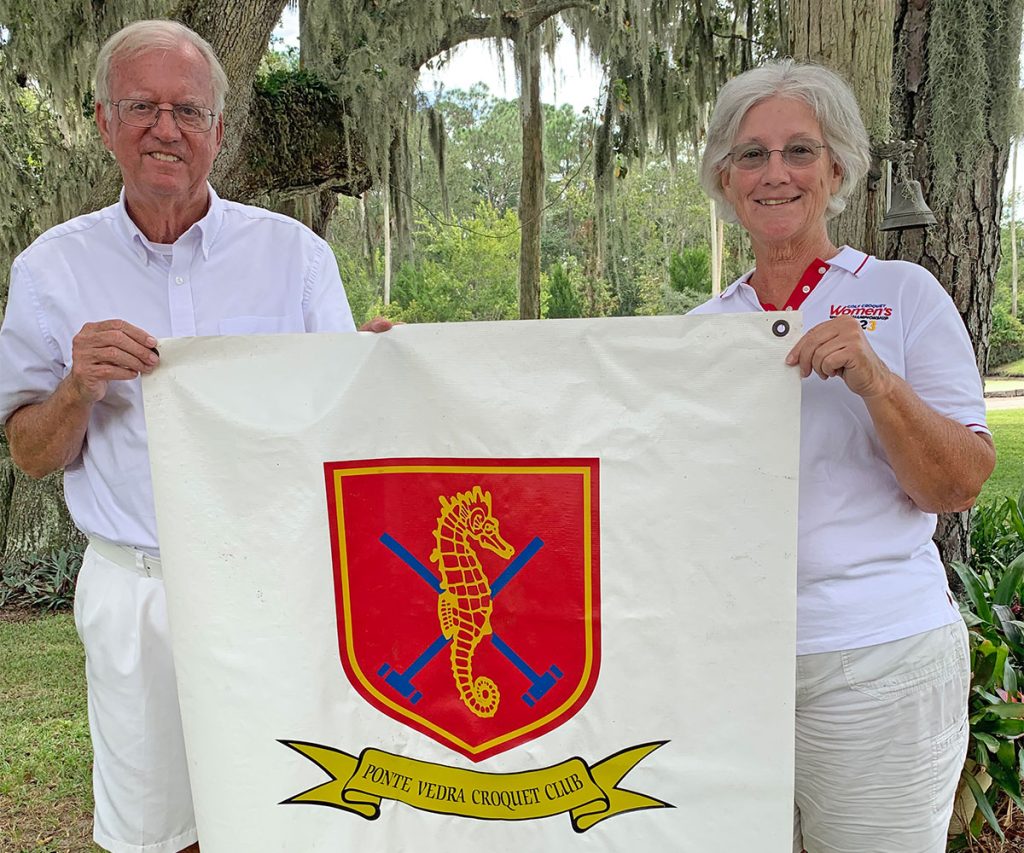
The PVCC club is a gem of a property, now home to seven impressive croquet courts, described as tennis-court-sized lawns, perfectly flat with a putting green surface. The South Lawn has four three-quarter-sized courts, and the North Lawn has three full-size courts.
The Players’ Pavilion has 3,000 square feet of open air, a lounge and facilities. An outdoor deck overlooks the lawns, moss-draped oaks and picnic area. The club property is available after-hours as an event venue.
PVCC is a membership club with annual dues. It is open daily except Mondays, with free introductory sessions, beginner to advanced lessons, recreational and inter-club play, events and tournaments. PVCC is a member club of The United States Croquet Association and participates in the First Coast Croquet League interclub play.
By Julie Kerns Garmendia
Resident Community News







